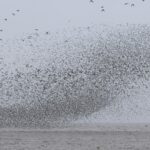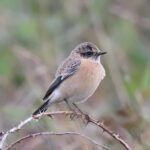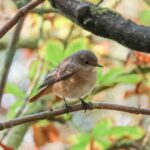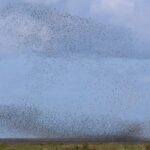Day 3 of a 3-day Winter & Brecks tour in Norfolk. With better weather forecast, we were heading down to the Brecks today and it was even better than expected, with some nice sunny (sun!) spells, even if there was a bit more of a chill today when out in the fresh breeze at times.
It was a slow drive down this morning and we were later than expected arriving at Lynford Arboretum. There had been some Hawfinches around first thing, so we went straight over to see if we could find them. We were disappointed to discover first that there was no food out from the gate, at least on the ‘public’ side of the green plastic sheet which is still hung across the tree tunnel. There were very few birds dropping down our side, just a single Yellowhammer, and a brief Brambling which didn’t even descend from the trees.
We decided to try down at the paddocks, so walked down to the bridge. The feeders looked empty here too and although someone had just sprinkled some food on the pillars there were just a few Blue Tits and Great Tits coming in so far. Continuing on, we scanned from the track along the side of the paddocks and couldn’t see anything in the hornbeams. Someone else there told us that there had still been five Hawfinches an hour earlier, but they had flown off towards the Arboretum.
It seemed like the best idea would be to head elsewhere and try again here later, so we walked back up towards the car park. We were not back to the gate when we looked up to see two Common Cranes circling low over our heads and we watched them as they drifted slowly away east. A real surprise to see them here and a very nice bonus. Presumably they had circled up in response to the sunshine, and with a couple of Common Buzzards up now too, we decided to head straight off and see if the Goshawks were coming up already too.
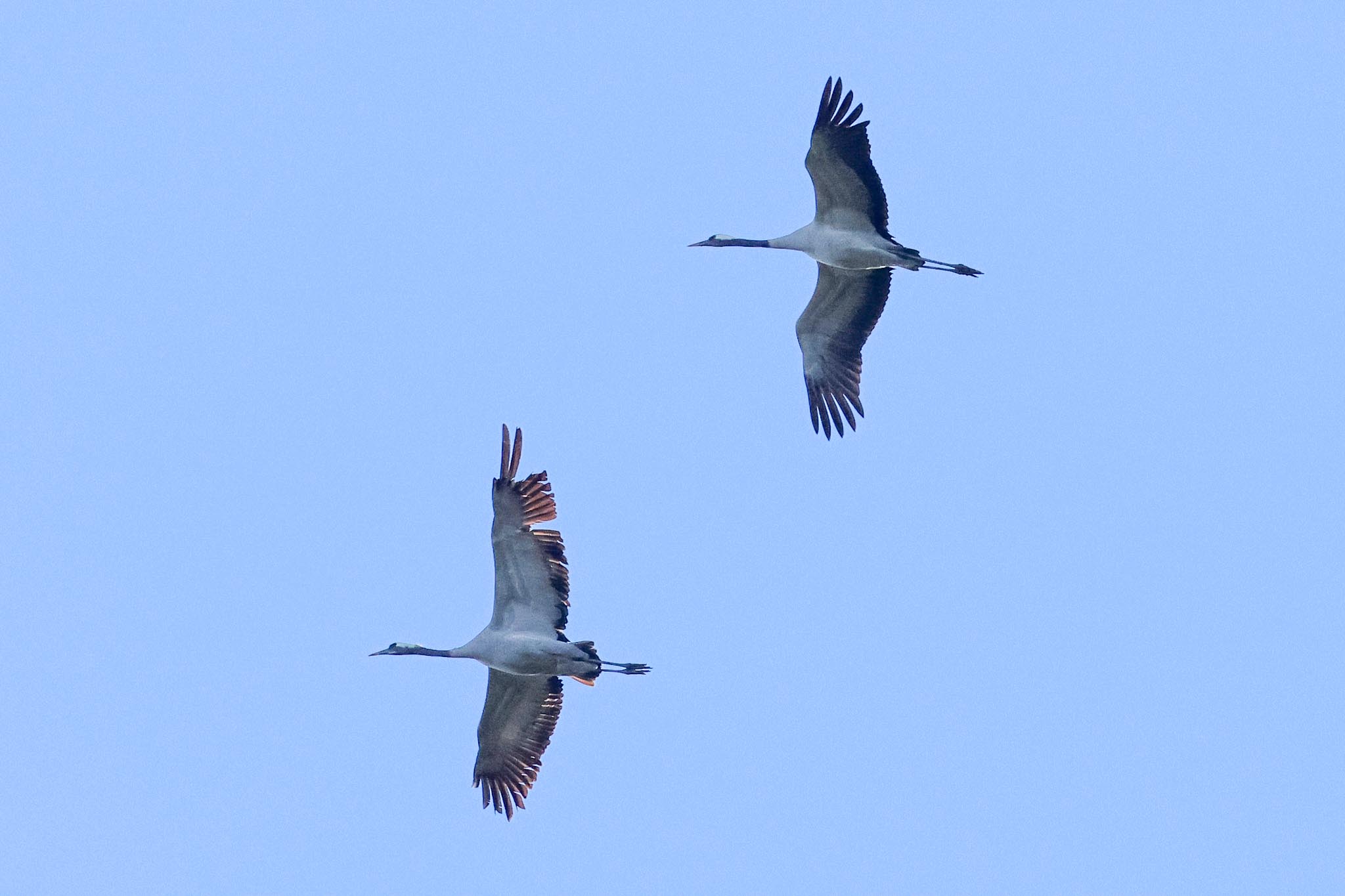
We drove over to the usual spot on the high ground looking over the forest and when we arrived and got out there were lots of Common Buzzards circling up already. We counted at least twelve in the air at the same time at one point. There was a good breeze blowing, which usually stimulates raptor activity and a couple of Red Kites were chasing each other round in circles further back too.
We didn’t have to wait very long before a Goshawk appeared. It was rather distant, but it circled up and started to display, slow flapping with exaggerated deep wingbeats. We got it in the scope before it slowly drifted back over the trees and was lost to view. Then an adult male Goshawk appeared much closer, circling up quickly before starting to display too. After a bout of slow flapping it broke into full on rollercoaster display, descending in a series of dramatic swoops and climbs before folding its wings and plummeting back into the trees.
There were one or two more browner juvenile Goshawks which then appeared further back, and started to display too, slow flapping again. We managed to get those in the scope too. Then it seemed to go quiet for a bit, and even the Common Buzzards appeared mostly to disappear back into the trees too. With several more things to try to do today, we decided to move on.
Acting on a tip-off, we headed off deeper into the forest, parking at the head of a ride and walking in through the pines. As the trees started to thin out, we could hear a Woodlark singing ahead and as we came out into a large clearing we could hear a Stonechat singing too. Scanning the standing trees which had been left in the clearing, we quickly found what we had come here to look for, a Great Grey Shrike was perched half way up in the branches. We got it in the scope and watched it as it swooped out a couple of times after prey, then it flew out and we lost sight of it.
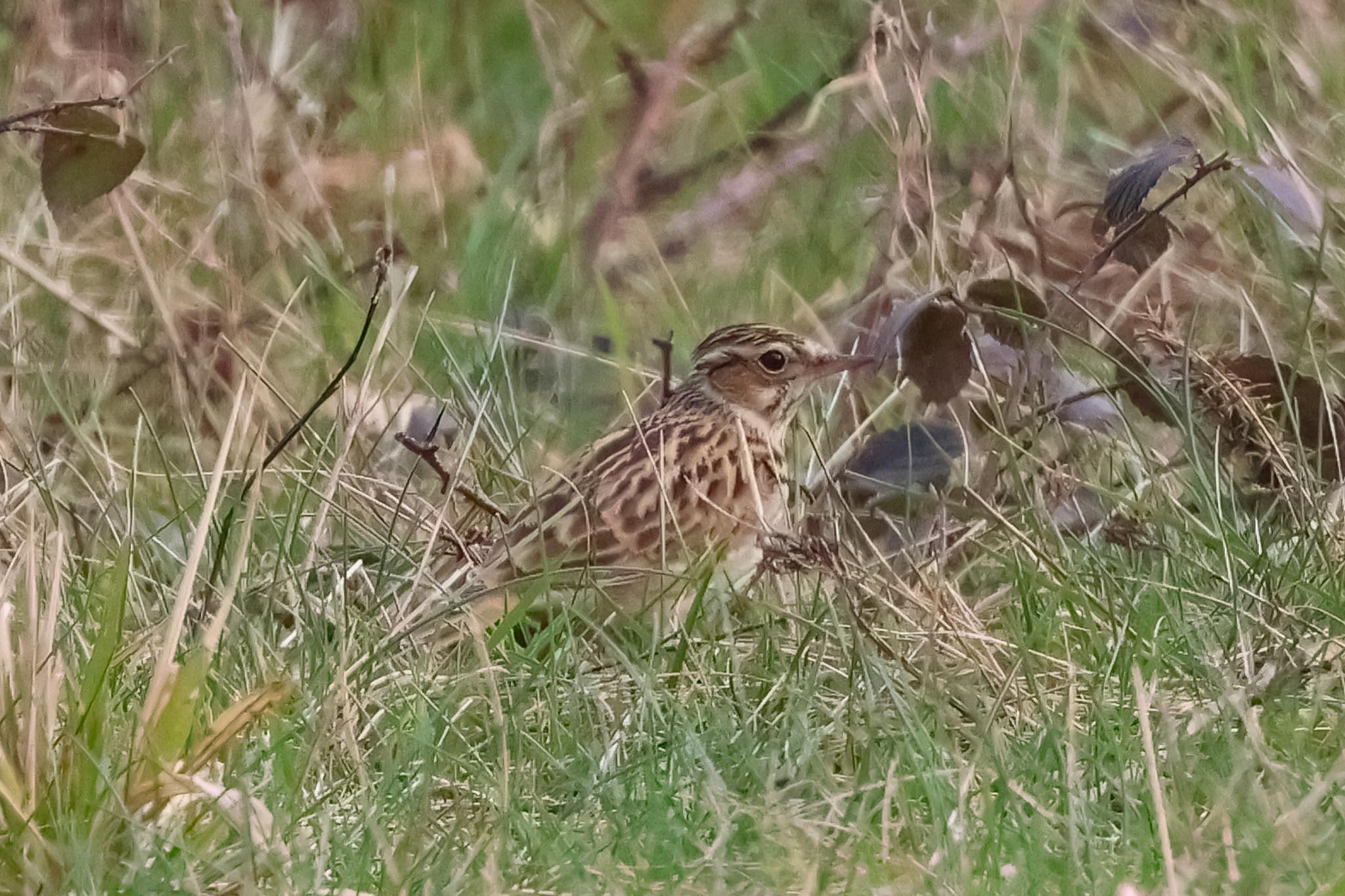
We were planning to walk on along the track through the clearing to see if we could locate the Woodlark, which had now stopped singing, but before we could one flew in and landed on the edge of the track not far in front of us. We got it in the scope, but it kept disappearing into the taller grass, before emerging again in a different place. Eventually we had some very good views.
We found the Stonechats out in the clearing now, a pair of them which showed typically well, perching up on the tufts of vegetation. A bright male Yellowhammer flew up and landed in one of the trees, before dropping down into the grass again. A Common Buzzard was in one of the trees too. The Great Grey Shrike then reappeared, closer to us now, perching on some old tree stumps a little closer to us.
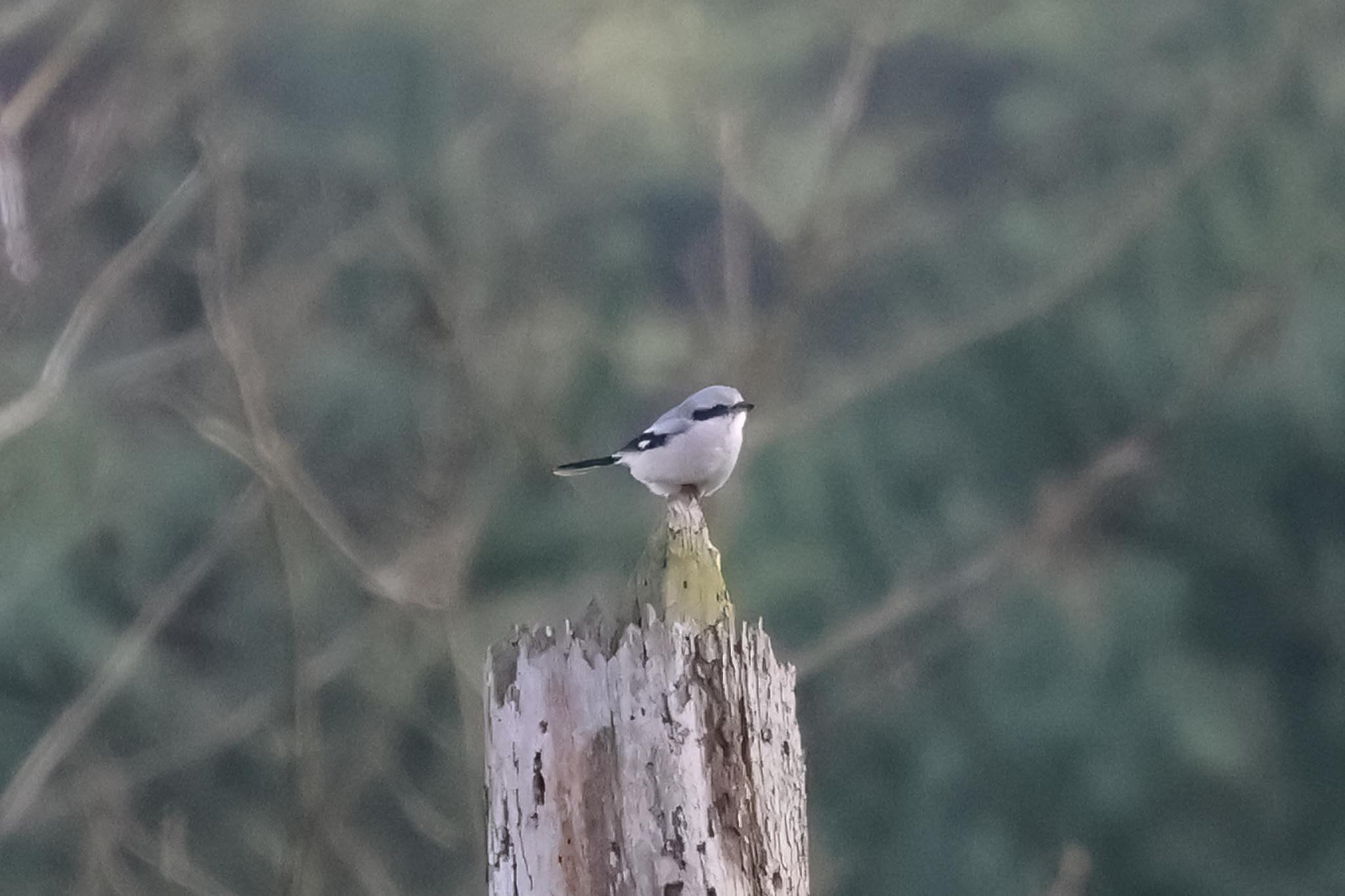
The Woodlark started singing again, and we looked across to see it perched half way up one of the trees. It was much easier to see now and everyone had a chance to get a really good look at it in the scope. A pair of Lesser Redpoll dropped down into the vegetation in front of us too, before flying up and one of them landing on a branch over the track.
It was time for lunch, so we walked back along the track to the minibus and drove back to Lynford Arboretum. The sun was out and it was nice to be able to eat outside today, making use of the the picnic tables in the car park, very different from the last couple of days.
After lunch, we walked back over to the Arboretum. The Hawfinches had apparently been seen from the gate again, but as we walked up, the person standing there had not seen them. We could hear Hawfinches calling now, from somewhere in the trees above us. We walked up towards the orchard gate, to see if we could look back and find them, but before we got there three Hawfinches flew out of the trees and we watched them disappearing off towards the paddocks. There was just a Goldcrest left feeding in the blackthorn blossom now. We headed down to see if we could find them there.
There was more food in some of the feeders now and more birds coming in and out, so while we went to scan the paddocks from the start of the lakeside path, the rest of the group stopped to watch the feeders. It didn’t take long though to find the Hawfinches feeding on the ground below the first hornbeam, along with a small flock of Chaffinches and a couple of Bramblings, so we called everyone over to see them in the scope. The Highland Cattle have not been grazing in the paddocks this winter so the grass is longer than usual and the birds are harder to see as a result. Before everyone could see the Hawfinches, all the birds spooked and flew up.
We couldn’t see the Hawfinches in the hornbeam above now and looking further down the paddocks we realised they had flown on down to the ash trees and were perched more distantly in the tops. Everyone had a quick look through the scope, but we were looking into the sun from here, so we walked back to the track which runs along the side of the paddocks and down to see if we could get a better look.
When we arrived at the gap in the hedge opposite the ash trees, there was no sign of the Hawfinches but scanning the branches we found a female Common Crossbill picking at the end of one of the twigs instead. Through the scope we could see its distinctive crossed mandibles, before it dropped down out of view. A nice bonus, as they have been more elusive here in recent weeks.
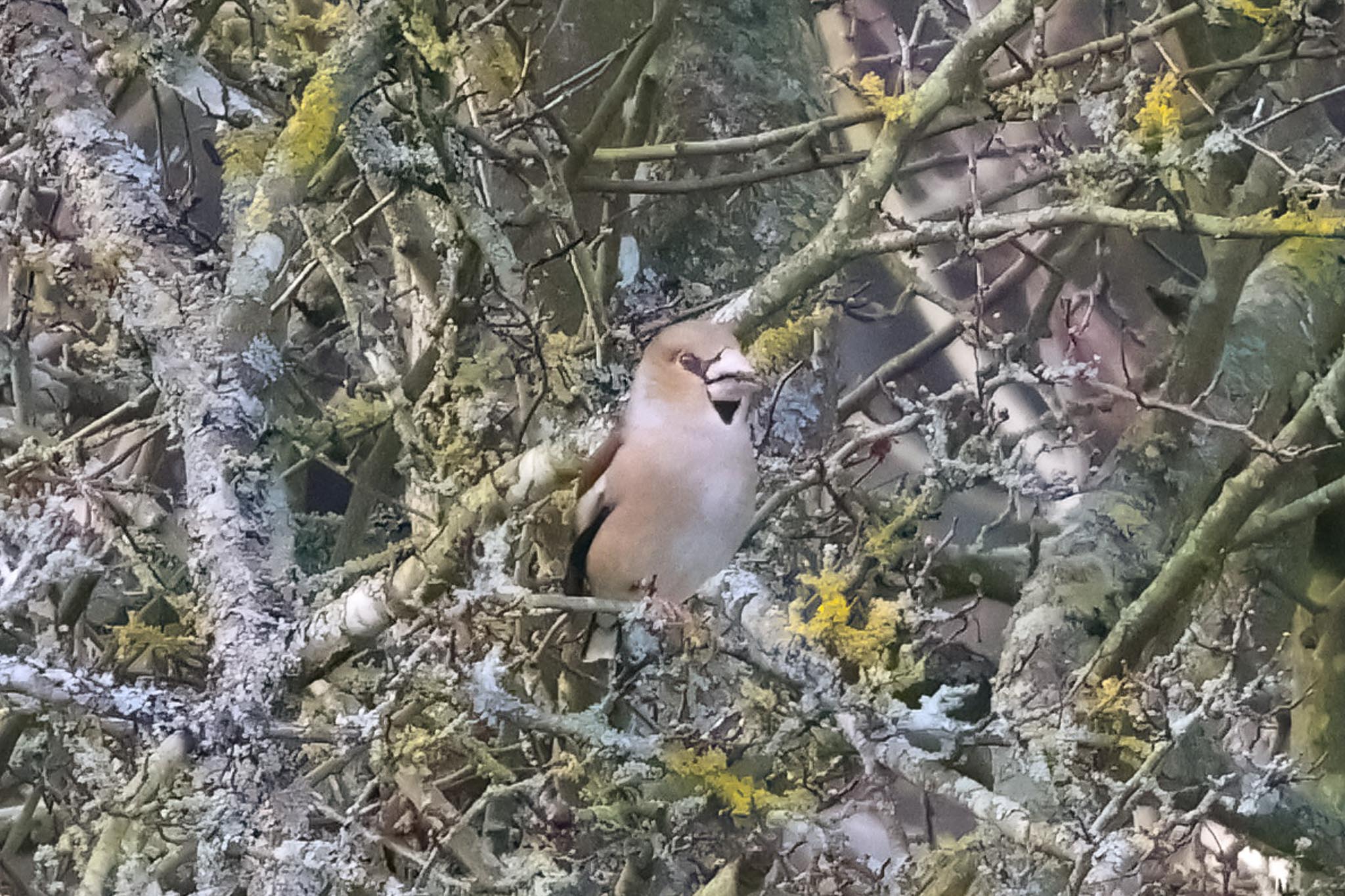
The Hawfinches were back feeding down under the first hornbeam, so we got the scope on them again. We could see a huge head and bill come up out of the grass from time to time. We were hoping to get them perched in the trees, and we didn’t have to wait too long before all the finches spooked again and a female Hawfinch flew across and landed in the middle hornbeam straight in front of us. We had a much better view now as it clambered around in the branches higher up and then dropped down to the bushes lower down and perched facing us in the sunshine.

When the Hawfinches dropped down into the grass again, we walked back to the bridge. Two Nuthatches were coming in and out, grabbing a nut from the feeders and taking it back up into the trees beyond. After a while, the Marsh Tit reappeared too and we finally had good views of it as it came in a couple of times and landed on the ground below the feeders where some food had been spread.
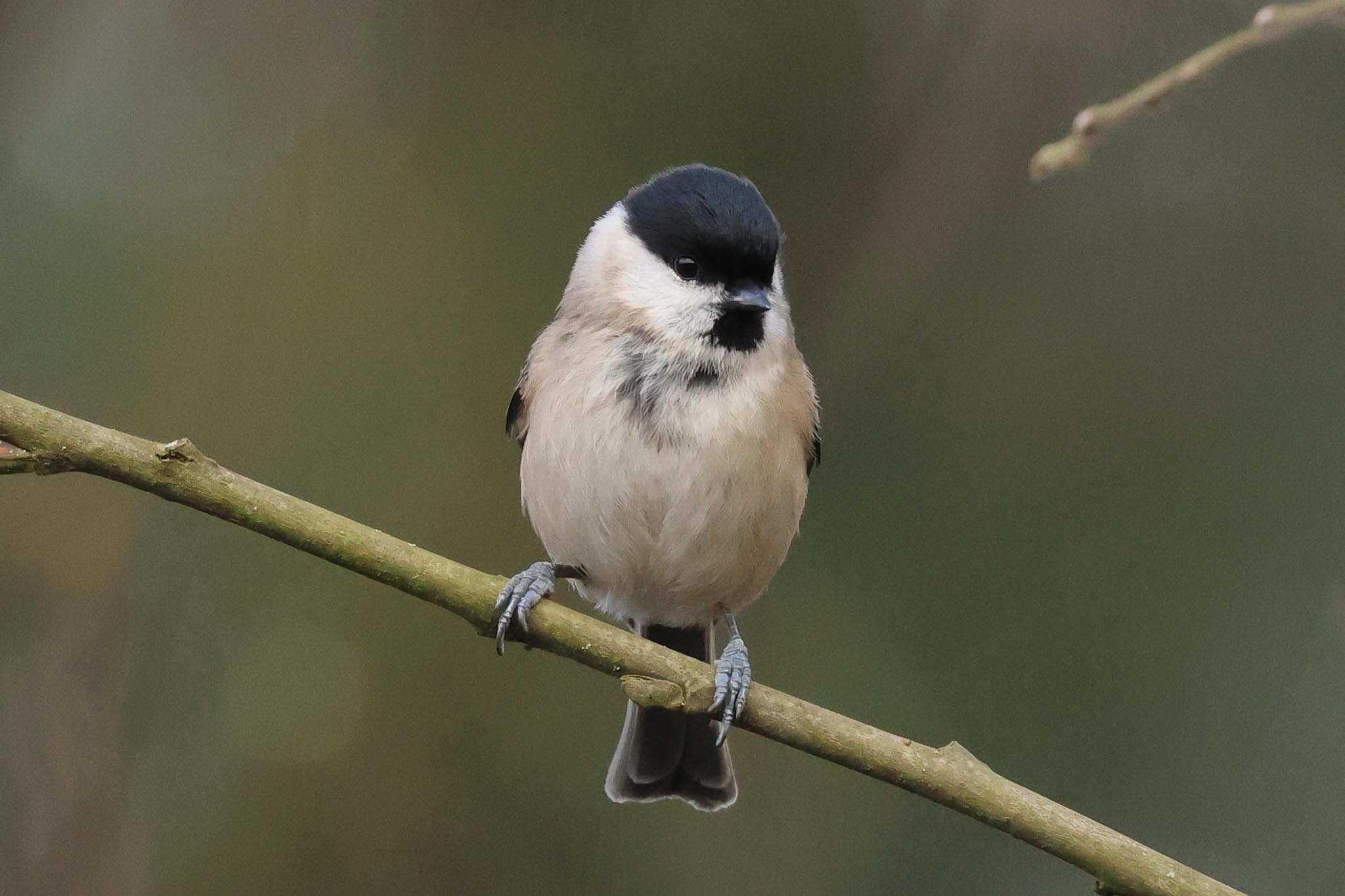
We were planning to walk down round the lake to see if we could find the Siskins, but several flew in and landed in the alders above the bridge now. We had some nice looks at them, before they moved off through the trees on the edge of the water. A Little Grebe laughed at us from somewhere deep in the reeds.
We had one last stop planned for this afternoon, so we made our way back to the minibus and drove over to an area of farmland with a small field planted with wild bird seed mix. As we got out of the bus, we could see large numbers of Yellowhammers and Reed Buntings flying in and out of the crop, perching in the tops of the trees along one side.
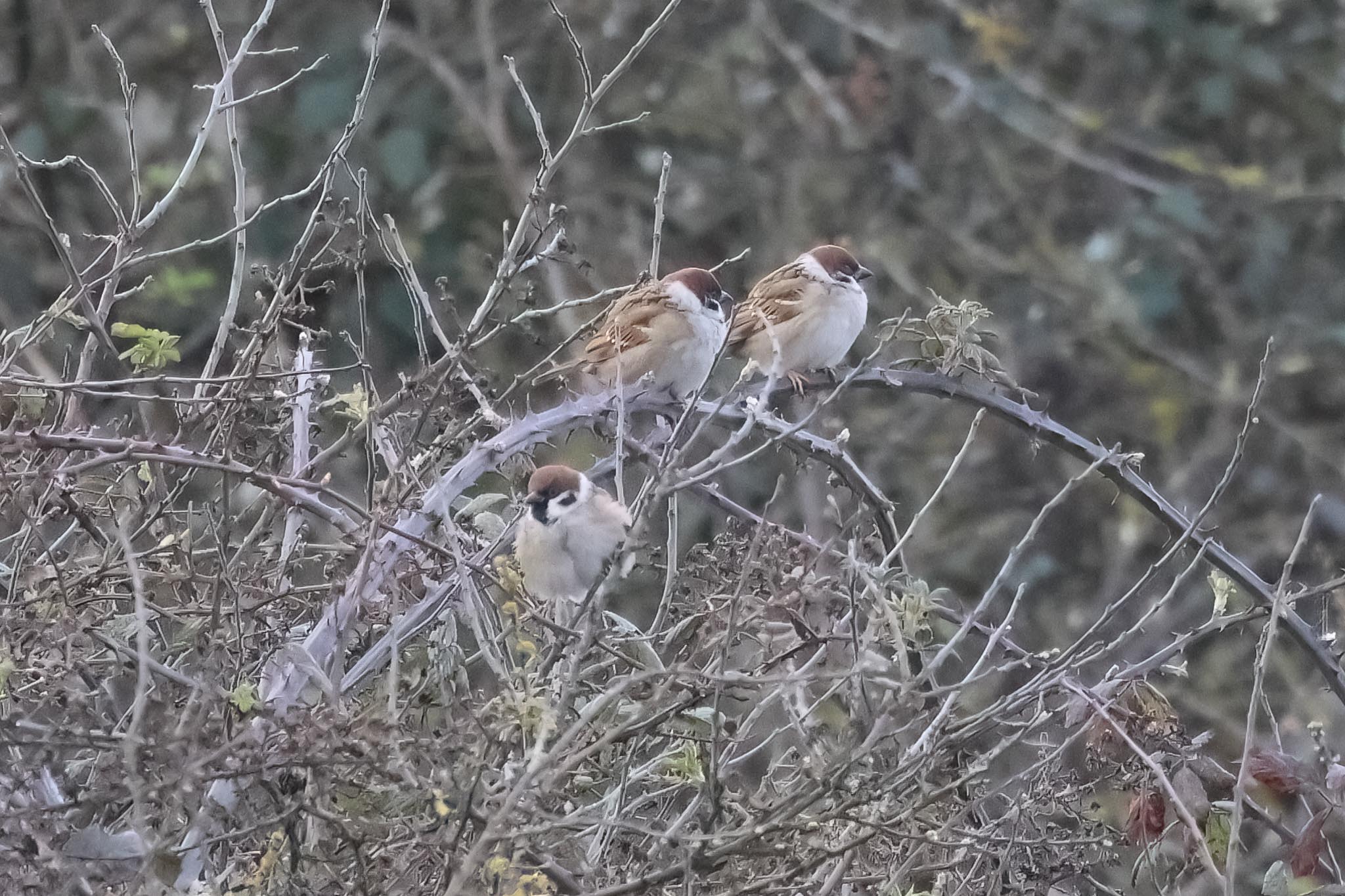
Scanning up along the hedge the other side, we could see the birds we were hoping to see here, a small group of Tree Sparrows. They were coming and going from the crop and disappearing into the thick brambles and blackthorn, but we counted a minimum of 11 in view together at one point. This is a species which has declined dramatically in southern Britain in recent years, and there are very few places you can see them here now, so it is always to catch up with them, and particularly to see a reasonable number rather than just ones or twos.
It was time to head back for tea and cake. It had been a great day down in the Brecks and although the weather had been challenging at times the previous two days, everyone had enjoyed a very good time in Norfolk and we had managed to see some good birds.
